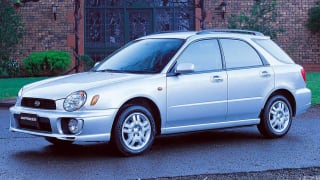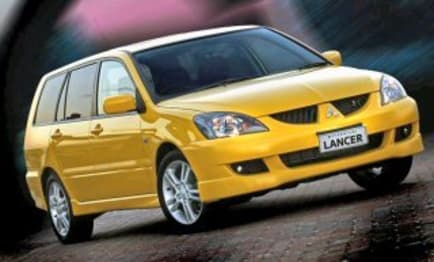Perhaps a scrapped rim. Or even a dented panel or two. Or something even worse – a bruised ego.
But you're among friends. People who are only too willing to lend a hand.
People such as Colin Bonney who was a busy scrutineer to the assembled car entries at the recent AEM-organised autokhana at the Midvale Speed Dome until he found himself curing a pretty MGB's fuel-flooding problem.
Explore the 2004 Mitsubishi Lancer range
Autokhanas such as those at the Speed Dome – there are a couple each year – and AutoActions more frequent days at Belmont Park raceway plus those held by MC Motorsport are the catalysts for car enthusiasts who want to know how to drive better and how to care for their car.
It's not about driving faster, it's about vehicle control.
On the day I steered a new Lancer Evo VIII through the Speed Dome course, entries were close to 60.
So many, in fact, that competitors were split into morning and afternoon sessions.
The array of entrants' cars was staggering: a beautifully restored 1973 Ford Escort belonging to Morgan Oliver; a rare Australian-build Ford Cortina GT500 showing its twin fuel filler caps; a brace of Lotus Elises; a parade of Subaru WRXs; and some unusual yet entertaining competitors such as a purpose-built Mini Moke and a Nissan Cefira that spent most of its track time sideways.
The Evo VIII is substantially bigger than the last of the previous body-shape models, the Evo VI.
The first sign is when you pull on the helmet and your head doesn't connect with the headlining. Last year, in an Evo VI, the cabin was so tight it was a bit like being poured into a martini shaker and then brutally mixed by an over-hyped Manhattan barman.
The second sign is the difference in weight – lots more weight you can actually feel when throwing the car through the corners – and the extra length of the newest Evo.
The VIII is most noticeably less raw and a tad more predictable than the VI, with a more gradual transition from understeer to oversteer – a move relatively easily accomplished by lifting off and then squeezing the accelerator pedal.
Yet though there is a different level of civility between the VI and VIII, the level of grip on the tarmac is just as tenacious.
At speed the VIII will squeal like a lifted piglet as the tyres bite each corner. The Yokohamas – nice tyre, by the way – will slide, but it's very controllable unless you go stupid. By comparison, the VI has a rather savage transition through the corners and needs a well-trained eye to contain and maximise the performance.
Though down on power on the VI – 195kW compared with 206kW – the VIII is still a fantastic buzz to drive.
Off the mark it rockets forward and will run to 7500rpm before needing an upchange.
Yet – and this is a plaudit for an engine that is almost 20 years old – it has an almost docile delivery of stump-pulling torque.
Away from the track the VIII is as easy to punt aound the city as its house-trained base-model Lancer cousin.
It's tractable, benign, very forgiving and even relatively frugal on fuel.
The ride isn't as harsh as the VI and the seats – still made by Recaro – have a plusher cloth finish with more padding and fewer side bolsters. That makes it easier to get in and out of the car.
The driving position is still one of the best around and the general dashboard layout is neat and functional, though the radio controls are made for hobbit fingers.
There's room in the back for two adults and the boot is quite spacious despite the all-wheel- drive layout.
The spacesaver saves weight in a car that is already too heavy to believe, so you just have to cop it.
But this is a superb car. You'd buy this to enjoy driving to work during the week and have an Evo VI – preferably black to reflect its menacing attitude – in the garage for weekends on the track.











